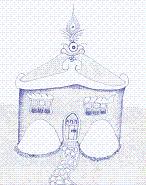Be Kind! Share with your Team, with your Family, with your Buddies!
Click The Button Now & Like This On Your Facebook Page!
Monday, February 03, 2014
Two Main Types of Hydroponic Systems
Today an increasing number of people are growing their crops hydroponically, and with really good reason. The growth rate of hydroponic crops is 30 to 50 % faster than traditional soil based plants, developed under the same conditions. In general, hydroponic crops are much healthier because the needed nutrients for optimal plant growth are supplied straight to their root system. The plants don't need to look hard in the soil for the nutrients they need, allowing them to conserve their energy for healthier and faster development and increased yields.
If you are all set to actually discover the advantages of hydroponic gardening, there are two principal kinds of systems that you can use, the recirculating and run to waste system.
Recirculating/Recover System
The recirculating or recovery systems push the nutrients and water from the main tank to the root system of the plants. The excess nutrients are returned to the tank which is to be used for another cycle. You can have either a recirculating system without a medium or with a medium. Among the most popular recirculating system without a medium is the Nutrient Film Technique or NFT and aeroponics, while the usual growing media for recovery systems are rockwool, expanded clay and perlite. These kinds of systems are quite well-known among hydroponic gardeners because they are a lot more cost-efficient than the run to waste systems.
However, using recovery systems also has its downsides. Because these systems utilise cycled nutrients as opposed to fresh and new batch of nutrient mixture, it is necessary to routinely inspect and correct their pH and EC levels. This augments the amount of time you will should spend in the grow area. If you neglect to observe the appropriate pH and EC levels, the system can become unstable. Another probable problem that you may come across with recirculating systems is the fast spread of harmful diseases such as pythium root rot which can quickly be carried from plant to plant because of the re-circulation of contaminated water and nutrient solution.
Run to Waste/Non-recovery System
In the run to waste or non-recovery system, water and nutrients are supplied from the tank, past the plant roots, into the bottom of the pot and straight right to the ground, waste basket or catchment dish. All excess nutrients and water are thrown away and never reused. The wick system is a great example of the run to waste kind of hydroponic system. Whilst, it is more expensive to maintain than recovery type, the run to waste system gives more stable levels of pH and EC. And if several of your plants acquire root disorder, there are reduced chances of cross contamination simply because the nutrient solution is not recirculated.
According to Mike Biggs, proprietor of CX Hydroponics, "There are numerous variations of both kinds of systems in the market. But, the success of any of these systems is based on the management of it. It is a great idea to obtain a basic understanding of hydroponics and what these systems are expected to do before you start growing."
If you need to find more info on the best hydroponic system and supplies, simply visit http://www.cxhydroponics.net/.















